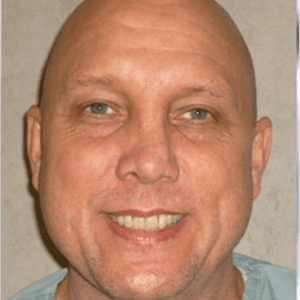
In the October 2020 episode of Discussions with DPIC, former Illinois Governor George Ryan speaks with Death Penalty Information Center Executive Director Robert Dunham about the events that persuaded him to commute the death sentences of all 167 death-row prisoners in Illinois in 2003. Ryan and Dunham delve into the Governor’s journey from death-penalty supporter as an Illinois state legislator to death-penalty opponent as Illinois governor, and discuss his new book, co-authored with Pulitzer-prize winning journalist Maurice Possley, Until I Could Be Sure: How I Stopped the Death Penalty in Illinois.
The story begins, Ryan said, with the Supreme Court’s 1972 decision in Furman v. Georgia to overturn existing death-penalty statutes and Illinois’ reintroduction of capital punishment in 1977 after the Court upheld new death-penalty laws in Gregg v. Georgia in 1976. This was a time when “law and order” and “get tough on crime” were powerful political themes, he said. Not only was support for increasingly punitive criminal justice policies “the trend,” Ryan recalls, it won people seats in office. “I remember the debate vigorously,” he told Dunham. Then a member of the Illinois legislature, Ryan voted “green” for reintroduction of the death penalty in the state. Although he admits that he did not have a firm understanding of the issue at the time of his legislative vote, “I had been a believer in the death penalty,” he said, “and thought it was necessary.”
But during the legislative debate, one opponent of bringing back capital punishment asked: “For those of you that are voting green today, how many of you would throw the switch to execute somebody?” That argument, Ryan said, “gave me a little pause for thought. I thought the law is needed. I thought it’s necessary. But I would never want to throw the switch. Little did I know that some 20 years later, that I’d be charged with that obligation when the time came.”
Early in Governor Ryan’s term, on March 11, 1999, Anthony Porter, an intellectually disabled death-row prisoner, was exonerated after having come within days of execution. Porter’s exoneration was pivotal in transforming Ryan’s view of the death penalty. “He was exonerated by journalism students at Northwestern University,” Ryan said, “so there wasn’t anything that the system could say, ‘Oh, the system really works.’ Because the system didn’t. And if it hadn’t been for the journalism students at Northwestern, Anthony Porter would be in a box right now.”
When the governor saw news reports of Porter’s release from prison, “I said to my wife, how does that happen in America? How do you … put somebody in jail for 16 years of their life and each morning, when they wake up, they have to wonder, ‘Today, am I going to get executed or not?’… And that’s when I started to look into things,” Ryan said.
Shortly afterwards, Ryan declared a moratorium on executions and established a special Governor’s Commission to study the death penalty system as administered in Illinois. Many suspected Ryan intended to pack the commission with death-penalty supporters to justify continuing capital punishment. Instead, he consulted with a range of advisors “to pick the right people, … top notch people — prosecutors, defense lawyers, people that were involved with” the death penalty.
The commission met for more than a year, making 85 recommendations for reform to, Ryan said, “lessen the chance that an innocent person was going to be executed.” In an election year, the legislature passed only one of the recommendations, the videotaping of confessions. “We just couldn’t get anything done from the General Assembly,” he said. Ryan then began reviewing the cases of everyone on the state’s death row, taking the files with him “everywhere I went — when I would ride in the car, on an airplane, in my office, going to bed.”
“At that time, we had exonerated 13 through the courts that had been sat on death penalty for several years, and we had executed 12. So it’s kind of like flipping a coin, to live or die, with the death penalty,” Ryan said. After reading the case files, “I decided that I couldn’t determine who would live and who would die,” he said.
So, two days before leaving office in January, citing a death penalty system that was “fraught with error,” Ryan commuted the sentences of all 167 Illinois death-row prisoners who had completed the direct review process to life without parole, temporarily clearing the state’s death row. His staff almost universally opposed the idea, saying it would be politically damaging. “But, you know,” Ryan said, “I wasn’t going to a run again for office, so I wasn’t concerned about any of those things.”
Ryan suspects that his decision had personal ramifications. “George Bush was the president at that time, and he was very upset with me, because I did what I did with the commutation, and he let me know about it in no uncertain terms.” Ryan was subsequently federally prosecuted and convicted and spent five years in jail for public corruption for actions that, he says, are no longer illegal.
Twenty years after Ryan’s moratorium, questions remain as to what can to be done to fix the death penalty and the criminal legal system. “The death penalty was an issue that the public generally didn’t care about,” Ryan said. “And if they didn’t care about it, the legislators and the governor certainly didn’t.” He sees the fight to seek the abolition of the death penalty in America as an opportunity to make the world a better place. “When you’re talking about the death penalty, if you can’t get it straight and get it right, then you better not have it,” he says. “I would rather err on the side of life than on the side of death.”
Sources
Discussions With DPIC podcast, Former Illinois Governor George Ryan on Commuting Death Row and His Journey from Death-Penalty Supporter to Abolitionist, Death Penalty information Center, October 15, 2020.




